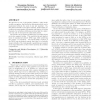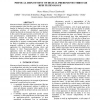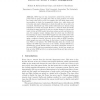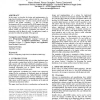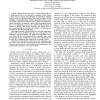E4MAS
2005
Springer
14 years 5 months ago
2005
Springer
Emerging pervasive computing technologies such as sensor networks and RFID tags can be embedded in our everyday environment to digitally store and elaborate a variety of informatio...
CCS
2005
ACM
14 years 5 months ago
2005
ACM
We introduce a new cryptographic primitive, called insubvertible encryption, that produces ciphertexts which can be randomized without the need of any key material. Unlike plain u...
ATAL
2005
Springer
14 years 5 months ago
2005
Springer
Pheromone-based multiagent interaction has received a growing attention in the past few years. Still, so far, the number of deployed systems exploiting pheromones for coordinating...
ACISP
2005
Springer
14 years 5 months ago
2005
Springer
Abstract. RFID tags are tiny, inexpensive, inductively powered computers that are going to replace bar codes on many products, but which have many other uses as well. For example, ...
AINA
2005
IEEE
14 years 6 months ago
2005
IEEE
An RFID tag is a small and cheap device which is combined in IC chip and an antenna for radio communications. The tag is used for management of goods and its distribution. Moreove...
SAC
2006
ACM
14 years 6 months ago
2006
ACM
In this paper, we describe the design and implementation of a tuple-based distributed memory realized with the use of RFID technology. The key idea – rooted in a more general sc...
MOBICOM
2006
ACM
14 years 6 months ago
2006
ACM
RFID tags are being used in many diverse applications in increasingly large numbers. These capabilities of these tags span from very dumb passive tags to smart active tags, with t...
HRI
2006
ACM
14 years 6 months ago
2006
ACM
This paper reports on a field trial with interactive humanoid robots at a science museum where visitors are encouraged to study and develop an interest in science. In the trial, ea...
IROS
2006
IEEE
14 years 6 months ago
2006
IEEE
— Robot search and rescue is a time critical task, i.e. a large terrain has to be explored by multiple robots within a short amount of time. The efficiency of exploration depend...
HUC
2007
Springer
14 years 6 months ago
2007
Springer
This article investigates the conflicting area of user benefits arising through item level RFID tagging and a desire for privacy. It distinguishes between three approaches feasible...

